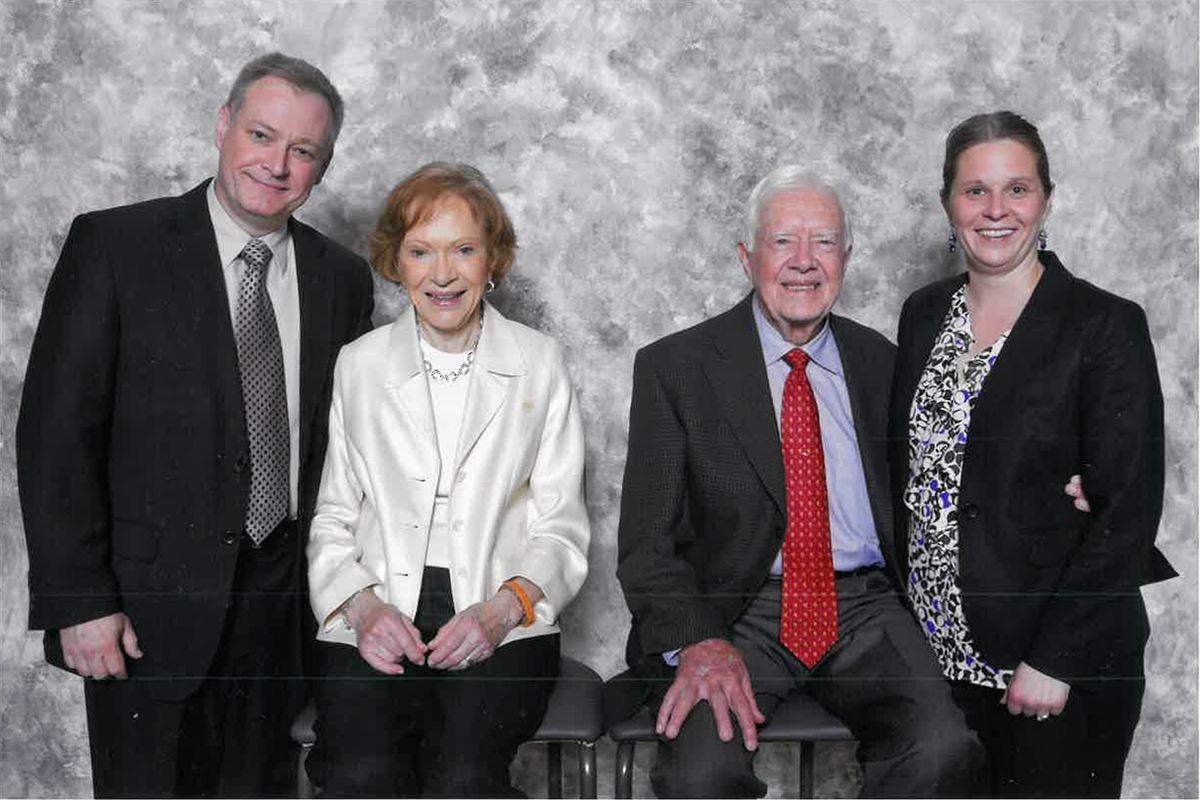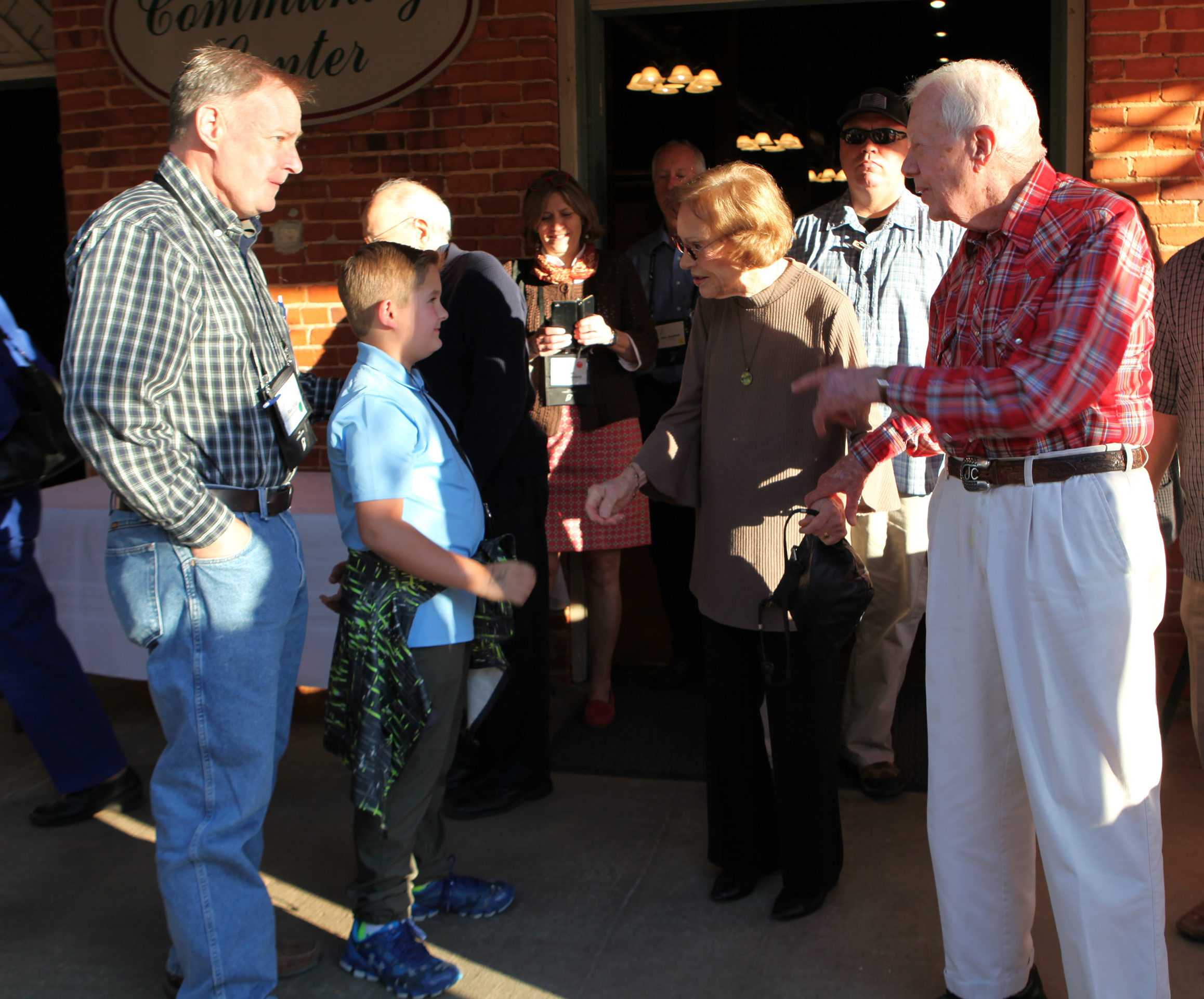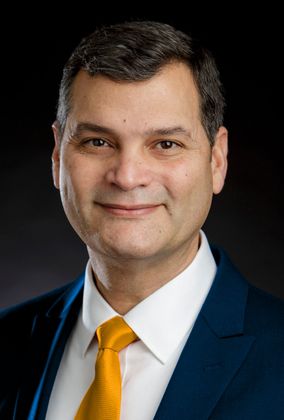, director of the , served as an election monitor on behalf of The Carter Center in Tunisia during the democratic election in 2014.
News — After earning her doctoral degree at WVU, Estep spent one year teaching at a college in Tennessee where she and her then-fiancé Paul took a group of students on a trip to The Carter Center in Atlanta. Inspired by the work there, she and her husband would go on to name their first child William Carter Estep in honor of the former president. She has pictures of her son square dancing with President Carter and former First Lady Rosalynn Carter.
“President Carter’s most impressive achievements are his accomplishments through The Carter Center. His post-presidency work was focused on the Center’s two-fold mission of peace and health programs. The health programs focus on neglected yet preventable diseases, most notably the Guinea worm eradication program. The peace programs promote democracy in several ways, but mainly through helping to ensure elections represent the will of the people. It was my honor to serve as a short-term election observer for The Carter Center for the first presidential and parliamentary election in Tunisia after the Arab Spring. I don’t doubt that The Carter Center will continue to ‘wage peace, fight disease and build hope’ to honor the legacy of President Carter.” — Crissy Estep, director, WVU International Studies Program, director, WVU Honors Experiential and Community Engaged Learning Program
, who now serves as senior advisor to , wrote his application for the Harry S. Truman Scholarship about Carter’s creation of a federal Department of Education.
Cole has studied Carter’s presidency, particularly his education policy reforms and their long-term effects, at length.
“By championing the creation of the U.S. Department of Education, President Carter affirmed the fundamental importance of education to our society. He also said that the federal government should be a ‘junior partner,’ not a ‘silent partner,’ with state and local governments on education. The creation of the Department of Education was controversial, and its continued existence remains a topic of political debate today. It is a valuable debate because it compels us to think about how we organize our educational system and also about how we calibrate the relationship between levels of government. I consider that ongoing debate to be one of President Carter’s most significant legacies.” — Jay Cole, senior advisor to WVU President Gordon Gee, Truman faculty advisor
, associate vice president and dean of the , oversees efforts to support and advance the comprehensive land-grant mission of WVU in all of West Virginia’s 55 counties.
WVU Extension includes the WVU Center for Community Engagement and AmeriCorps VISTA along with community development, engagement and service programs throughout the state.
“President Jimmy Carter was instrumental to the success and widespread efforts of Habitat for Humanity. Extension housing and resource management specialists across the nation partnered with Habitat to help families access affordable housing in their communities.
“President Carter also exemplified civic engagement and showed the world how to promote democratic elections while serving as an international electoral observer for many nations.” — Jorge Atiles, associate vice president and dean, WVU Division for Land-Grant Engagement
West Virginia University experts can provide commentary, insights and opinions on various news topics.  Search for an expert by name, title, areas of expertise or college/school/department in the at
-WVU-
sj/12/29/24
MEDIA CONTACT: April Kaull
Executive Director of Communications
University Relations
304-293-3990; [email protected]
Call 1-855-WVU-NEWS for the latest West Virginia University news and information from .
MEDIA CONTACT
Register for reporter access to contact detailsArticle Multimedia

Credit: (Submitted photo)
Caption: This portrait for an event at The Carter Center in Atlanta shows (from left) Paul Estep, former First Lady Rosalynn Carter, former President Jimmy Carter, and Crissy Estep, director WVU International Studies.

Credit: (Submitted photo)
Caption: During a trip to Plains, Georgia, in 2017, Paul Estep (left) and his son, William Carter Estep, talk with former First Lady Rosalynn Carter and former President Jimmy Carter.

Credit: West Virginia University
Caption: Crissy Estep, director, WVU International Studies Program, and director, WVU Honors Experiential and Community Engaged Learning Program

Credit: West Virginia University
Caption: Jorge Atiles, associate vice president and dean, WVU Division for Land-Grant Engagement

Credit: (Courtesy photo/West Virginia and Regional History Center)
Caption: U.S. Sen. Robert C. Byrd (D-W.Va.) shakes hands with President Jimmy Carter in the Oval Office.

Credit: (Courtesy photo/West Virginia and Regional History Center)
Caption: President Jimmy Carter signed this photo for U.S. Sen. Jay Rockefelller (D-W.Va.) who is on the right.

Credit: West Virginia University
Caption: Jay Cole, senior advisor to WVU President Gordon Gee, Truman faculty advisor

Credit: (Courtesy photo/West Virginia and Regional History Center)
Caption: President Jimmy Carter, alongside Vice President Walter Mondale, greets U.S. Rep. Nick Rahall (D-W.Va.) at the White House during a dinner for early Carter supporters.





